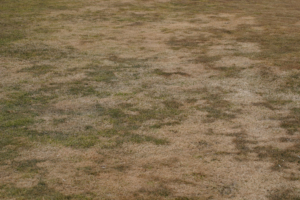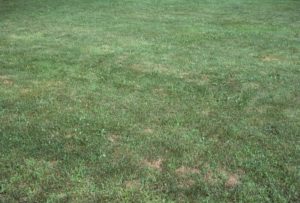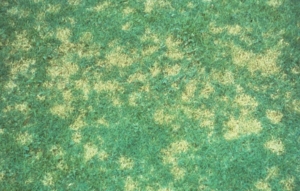Disease Control
Learn about the diseases that can hinder your lawn’s beauty.
Fungi play an important role in the health of your lawn; therefore, it is important for you to hire an expert to diagnose and treat your lawn’s disease issues. While most fungi feed themselves by breaking down dead organic matter and, in the process returning nutrients to the soil, the ones that attack living plants must be controlled in order to maintain a healthy lawn. Your lawn contains literally thousands of fungal species. Clearly, because of the important role fungi play in recycling organic matter, the last thing you want to do is to eliminate the beneficial fungi in your lawn. Using the wrong fungicide could actually make things worse! Our 3 step disease control program offers effective broad-spectrum control against red thread, dollar spot, and other turf-related diseases.
New England lawns can be infected by harmful fungi throughout the year. Since fungi do not depend on the sun for energy, they can grow under the snow cover in the early spring when the ground is damp from the melting of the snow. Summer fungal infections, which thrive in warm weather, are also associated with wet conditions.
Snow Mold (March to April)
Damage from snow mold fungi usually becomes apparent as the snow melts and exposes the grass in late winter or early spring. There are two main species of snow mold which grow under the snow in New England lawns, both of which can be identified by the matted look they give to your lawn:
Pink snow mold: The web-like mycelium, which is the vegetative part of this fungus, can be yellow, tan, or salmon in color. Pink snow mold patches are pale pink around the edges and may grow to 8 inches in diameter.
Grey snow mold: This fungus is white to greyish in color. This infection produces bleached areas consisting of white crusted patches of grass that range from several inches to several feet across.
Snow mold fungi are active at temperatures just above freezing when soil conditions are moist. A light raking will usually restore the lawn. However, in some cases, seeding the affected areas may also be necessary.
The key preventative measures to reduce your lawn’s risk of developing snow mold are:
- Implementing a late fall fungicide will prevent the pathogens from developing over winter.
- Applying a winterizing treatment.
- Mowing the lawn down closer to the ground at the end the fall season, to about 2” above the soil level.
Red Thread Fungus (June to July)
Red thread lawn disease is common to the cool season grass types that make up New England lawns. This fungus thrives between temperatures of 65 and 75 degrees Fahrenheit and again is associated with damp conditions.
The first signs of infection are small irregular patches of yellowing grass. Closer inspection reveals tiny red needles and pink fluffy bodies. As the infection spreads, the small patches join up into large brown areas.
The professionals at Lawns of Southern New Hampshire can help rid your lawn of this problem by:
- Adding a supplemental nitrogen-based fertilizer to your program which will help the grass recover. Strong healthy turf grass is better able to fight off lawn diseases.
- Managing your watering practices. Overwatering promotes fungal growth. Deep, infrequent watering events of 40 minutes per area are suggested.
- Our fungicide will help keep your turf at its finest through the summer months.
Dollar Spot (July to August)
Dollar spot can be identified by its characteristic round brown to straw-colored sunken spots that are about the size of a silver dollar. This fungus flourishes during periods of warm days and cool nights when there are continuous stretches of high humidity.
Proper fertilization and deep, infrequent watering will help keep this disease at bay.
Struggling with lawn diseases and keeping up with lawn care? Complete the form below and we’ll be more than happy to help you out.
With all fungal diseases, avoiding evening water usage, core aerating annually, and testing the soil to determine the factors that may be contributing to disease development are good practices in forming a plan of attack.



